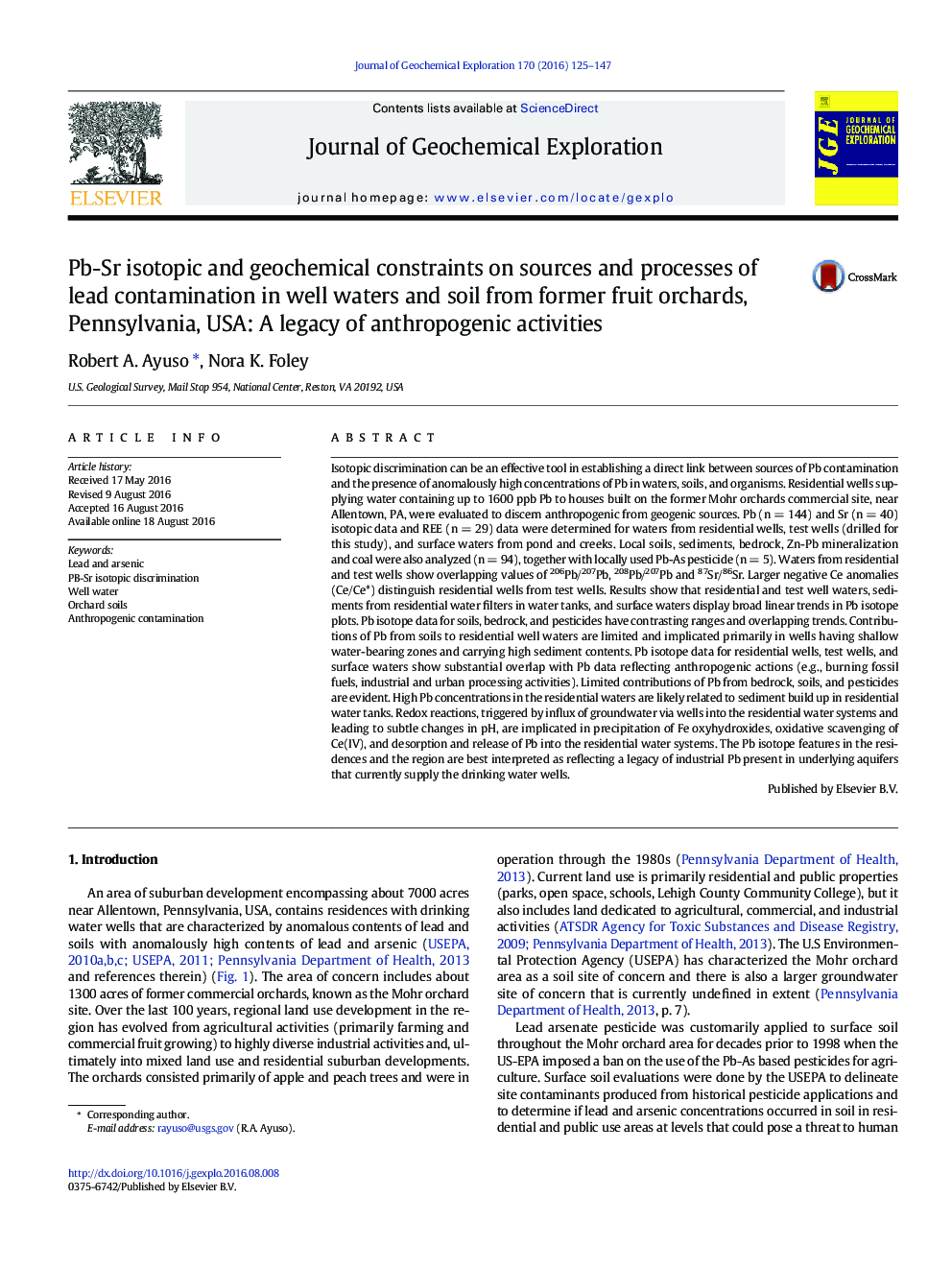| کد مقاله | کد نشریه | سال انتشار | مقاله انگلیسی | نسخه تمام متن |
|---|---|---|---|---|
| 4456888 | 1620889 | 2016 | 23 صفحه PDF | دانلود رایگان |

• Isotopic discrimination can be an effective tool in identifying sources of Pb contamination
• Soils of former commercial orchards near Allentown, PA, USA contain anomalously high Pb and As
• Drinking water from wells sited within the orchards are known to contain anomalous concentrations of Pb
• Pb isotope data for well waters indicate anthropogenic, versus geogenic, Pb sources
• Pb isotope data for waters in house well systems reflect a legacy of industrial Pb present in the underlying aquifers
Isotopic discrimination can be an effective tool in establishing a direct link between sources of Pb contamination and the presence of anomalously high concentrations of Pb in waters, soils, and organisms. Residential wells supplying water containing up to 1600 ppb Pb to houses built on the former Mohr orchards commercial site, near Allentown, PA, were evaluated to discern anthropogenic from geogenic sources. Pb (n = 144) and Sr (n = 40) isotopic data and REE (n = 29) data were determined for waters from residential wells, test wells (drilled for this study), and surface waters from pond and creeks. Local soils, sediments, bedrock, Zn-Pb mineralization and coal were also analyzed (n = 94), together with locally used Pb-As pesticide (n = 5). Waters from residential and test wells show overlapping values of 206Pb/207Pb, 208Pb/207Pb and 87Sr/86Sr. Larger negative Ce anomalies (Ce/Ce*) distinguish residential wells from test wells. Results show that residential and test well waters, sediments from residential water filters in water tanks, and surface waters display broad linear trends in Pb isotope plots. Pb isotope data for soils, bedrock, and pesticides have contrasting ranges and overlapping trends. Contributions of Pb from soils to residential well waters are limited and implicated primarily in wells having shallow water-bearing zones and carrying high sediment contents. Pb isotope data for residential wells, test wells, and surface waters show substantial overlap with Pb data reflecting anthropogenic actions (e.g., burning fossil fuels, industrial and urban processing activities). Limited contributions of Pb from bedrock, soils, and pesticides are evident. High Pb concentrations in the residential waters are likely related to sediment build up in residential water tanks. Redox reactions, triggered by influx of groundwater via wells into the residential water systems and leading to subtle changes in pH, are implicated in precipitation of Fe oxyhydroxides, oxidative scavenging of Ce(IV), and desorption and release of Pb into the residential water systems. The Pb isotope features in the residences and the region are best interpreted as reflecting a legacy of industrial Pb present in underlying aquifers that currently supply the drinking water wells.
Journal: Journal of Geochemical Exploration - Volume 170, November 2016, Pages 125–147